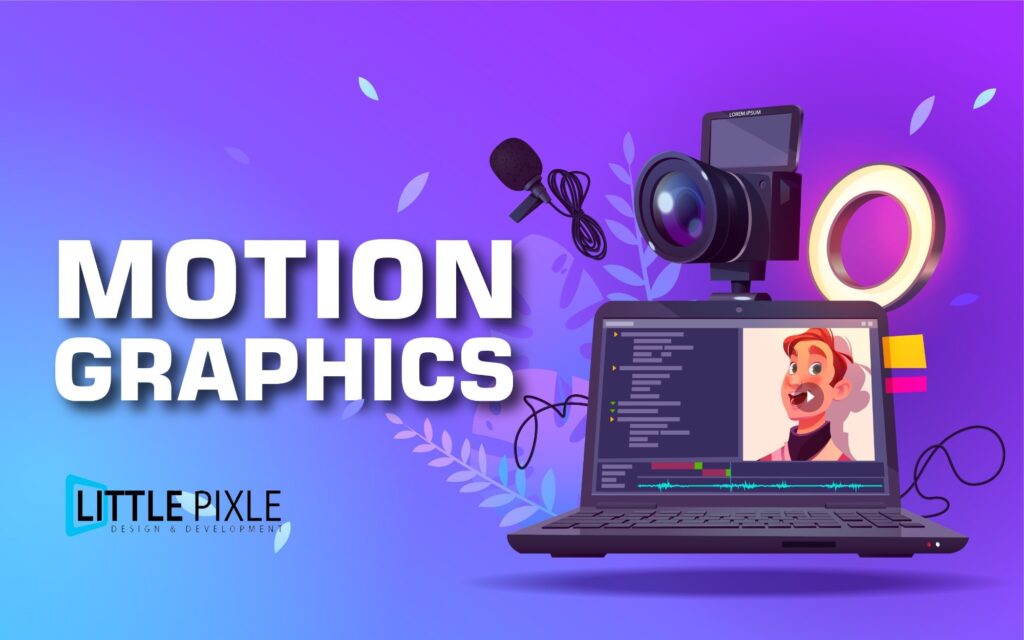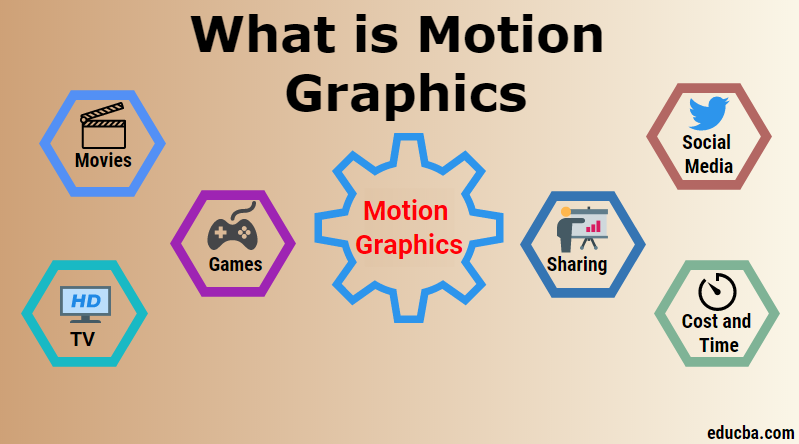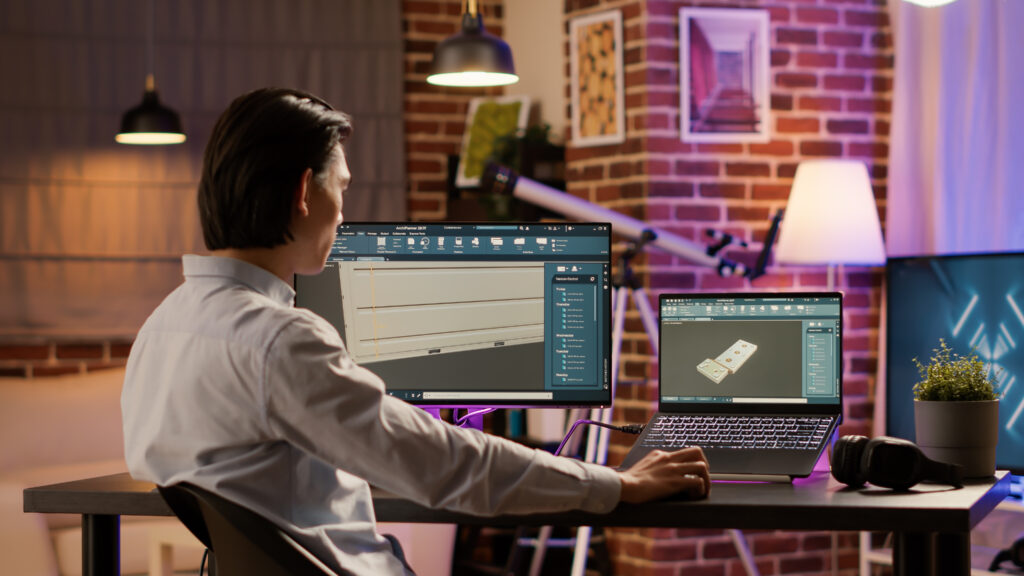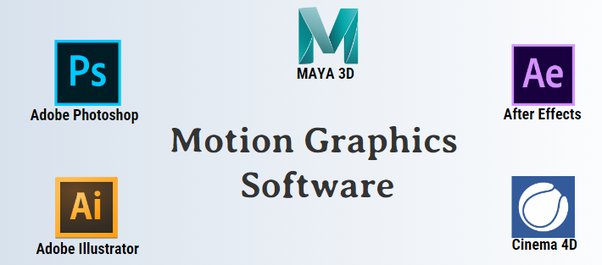Career After Motion Graphics

You may choose a career After motion graphics, you can find work in, marketing, retail, tech, and video games. And television, and movies, including at motion design studios, television networks, film studios, tech companies, corporations, and more. Motion Graphics Designers sometimes work alone but can often be found working on a team with: Animators, Art Directors, Graphic Designers, Copywriters, Concept Artists, Compositors, Coordinators, Designers, Creative Directors, Editors, and Producers. So, If you want to build your career in motion graphics you can join our institute to explore many things in this field.
What is Motion Graphics?

Motion graphics is a dynamic and creative form of visual communication that combines graphic design, animation, and audiovisual elements to convey messages. Unlike traditional static graphics, motion graphics incorporate movement, timing, and visual effects to create engaging and interactive content. So, Motion graphics often incorporate visual effects such as particles, glows, and blurs, to enhance the visual appeal and dynamism of the animation. Sound and music play a significant role in motion graphics, enhancing the overall impact and emotional resonance of the animation.
Motion graphics are created using specialized software tools such as Adobe After Effects, Adobe Premiere Pro, Cinema 4D, Autodesk Maya, and Blender. These programs provide designers with a wide range of tools and features for creating, editing, and animating motion graphics. Because Motion graphics are widely used in various industries and contexts, including advertising, film and television, user interface (UI) design, presentations, educational content, and digital signage.
Why Motion Graphics is a Good Option?
Motion graphics offer many advantages that make them a compelling option for various purposes. Motion graphics can be adapted to suit a wide range of purposes and contexts. So, Whether it’s advertising, branding, marketing, entertainment, or education, motion graphics can be tailored to meet specific objectives and target audiences. And Here are some reasons why motion graphics is a good choice to choose career after motion graphics:
Motion Graphics Designers are high in Demand
Motion graphics provide you with an engaging and visually appealing way to convey marketing messages. And They promote products or services, and drive engagement on websites, social media platforms, and digital advertising campaigns.
So, Motion graphics play an important role in enhancing the user experience of digital products and interfaces. Short, visually appealing videos, animations, and GIF’s are highly shareable and have the potential to go viral, reaching millions of users, and views. And driving brand awareness and engagement.
In Addition, the demand for motion graphics continues to grow as businesses, brands, and content creators recognize the power of visual storytelling. And the ability of motion graphics to capture attention, convey messages, and create memorable experiences in today’s digital landscape..
Remote Work Options Career after Motion Graphics
Remote work options in motion graphics are becoming increasingly common, thanks to advancements in technology and the availability of collaborative tools. Companies may hire motion graphics professionals for remote contract positions on a project-by-project basis.
So, Remote motion graphics work relies heavily on collaboration tools that enable real-time communication, like file sharing, and project management. Remote work options in motion graphics offer flexibility, autonomy, and the opportunity to work with clients and collaborators from diverse backgrounds and locations. And With the right skills, tools, and network, motion graphics professionals can thrive in a remote work environment and build successful careers.
So, Building a strong online presence and network within the motion graphics community can lead to remote work opportunities. And Participating in online forums, social media groups, and industry events allows professionals to connect with clients, collaborators, and employers.
Brand Recognition Career after Motion Graphics
As a Brand Recognition, you could make well-designed motion graphics that can help reinforce brand identity and recognition. By incorporating brand colors, logos, and visual elements into motion graphics content. Businesses can create a cohesive and memorable brand experience for their audience.
Brands can measure their level of recognition through market research techniques such as surveys, focus groups, brand tracking studies, and social media analytics. These insights help brands understand their position in the market and identify opportunities for strengthening brand recognition.
Memorable brand names and logos are essential for building brand recognition. So, A well-designed logo serves as a visual representation of the brand. It becomes synonymous with its values, products, and reputation. Over time, repeated exposure to the logo reinforces brand recognition and reinforces brand recall.
Motion graphics designers hold many job titles depending on their specific roles, responsibilities, and the organization they work for. Motion Graphics Designers have many transferable skills, such as drawing, designing, animation, and some soft skills. They can certainly apply for animation positions. we’ve rounded up the most commonly found Motion Graphics Designer Job titles. So, Here are some common job titles associated with motion graphics design:
1. Motion Graphics Designer
This is the most widely accepted and familiar title. These professionals create animated graphics for videos, commercials, films, websites, apps, and social media content. They typically use programs such as Adobe After Effects, Cinema 4D, and Premiere Pro to create motion graphics from still images.
2. Motion Designer
Motion designer is more general and indicates work in both 2D and 3D. A motion designer could work in various mediums—film, advertising, television, or AR/VR experiences.
3. Visual effects (VFX) artist
A VFX artist is traditionally someone who adds motion-enhanced visual effects onto live-action footage. This title does not strictly mean motion graphics, but many motion designers move into VFX work as they progress.
4. Animator
Animator is a general term, but today, animators typically work alongside motion designers. If animating character animation or creating scenes to tell a story, this is probably more appropriate.
5. Multimedia Artist
Multimedia artist is a broader term but includes all sorts of skills from video and animation, graphic design, and in some cases audio. This title is also appropriate for an independent artist working solo or in a small studio.
6. Digital Designer (motion)
Some companies differentiate between graphic designers and digital designers. Now when the motion part is added, it generally means a focus towards animated work or interactive movement.
7. 2D/3D Motion Designer
This is the position title when a company wants to delineate whether you are focusing more on two-dimensional animation or three-dimensional modeling and motion.
8. Post-Production Artist
If you are doing a lot of editing and post-production motion effects on footage after it has been shot, this title would be appropriate.
9. Video Editor with Motion Graphics Skills
In most productions and agency scenarios editors are typically also expected to know motion graphics as well. If you are executing a narrative with animated elements, this is a “hybrid” title you may see employed.
10. Creative Technologist
This title is more advanced than a hybrid position, and again, motion graphics is just one of the many talents. People in this position commonly work in interactive media, AR/VR, or installations.
Motion Graphics are an Effective Medium

Yes, motion graphics are indeed an effective medium for various purposes. By combining visuals, text and motion, these videos create an immersive experience that leaves a lasting impression on the viewers. So, Here are reasons you should know to make your career after motion graphics:
1) Motion graphics captivate audiences with dynamic movement, vibrant visuals, and engaging animations.
2) It offers flexibility in terms of design, animation, and storytelling.
3) They can be easily shared and distributed online through websites, social media channels, email campaigns, and digital advertising platforms.
4) Motion graphics have a higher likelihood of being remembered by audiences compared to static images or text-based content.
5) Offer a powerful and versatile medium for communication, storytelling, and brand engagement.
Benefits of using Motion Graphics In Graphic Design
1. Engagement: It is highly Engaging in today’s world it draws attention. Integrating motion into graphic design can capture viewers’ interest more effectively than static images, leading to increased engagement.
2. Visual Appeal: Motion Graphics can help in Dynamic elements like animations, transitions, and effects can enhance the visual appeal of designs. It making them more attractive and memorable.
3. Storytelling: Motion graphics can convey complex ideas or narratives more effectively than static graphics. Through animation, designers can guide viewers through a story or message with greater clarity and impact.
4. Brand Differentiation: Incorporating motion graphics can help brands stand out in a crowded marketplace. Unique animations and effects can create a distinctive brand identity and leave a lasting impression on consumers.
5. Versatility: A Motion graphics can be used across various mediums, including websites, social media, presentations, advertisements, and more.
Trends in Motion Graphics Career after Motion Graphics
Motion Graphics are subject to trends that evolve over time. These trends reflect the evolving landscape of motion graphics, driven by technological advancements, changing design preferences, and emerging creative concepts. So, Some Current trends in motion graphics include:
1. 3D Animation: With advancements in technology, 3D animation has become more accessible and widely used in motion graphics. Designers are incorporating three-dimensional elements to create visually stunning and immersive animations.
2. Liquid Motion: Liquid motion, is characterized by fluid-like transitions and animations, and has gained popularity in recent years. This style adds a sense of dynamism and energy to motion graphics, often used in logo animations, transitions, and UI/UX design.
3. Minimalism: It’s focus on clean design, simple shapes, and subtle animations. This trend emphasizes clarity and elegance, using motion sparingly to enhance the visual impact without overwhelming the viewer.
4. Textured Animations: It’s Incorporating textures into motion graphics adds depth and tactile appeal. Textured animations can evoke a sense of realism or enhance the visual aesthetic, creating visually rich and engaging experiences.
5. Typography Animation: Using animated text to create dynamic and engaging designs. Illustrated animations combine hand-drawn or digitally created illustrations with motion graphics.
6. Responsive Design: With the increasing use of mobile devices, laptop and varying screen sizes, responsive motion graphics adapt seamlessly to different platforms and devices. Designers are creating animations that adjust to the user’s interaction or screen size, providing a consistent experience across devices.
Motion Graphics are an essential tool in the field of graphic designers. They allow them to create dynamic and engaging content that attracts audience. If you want to learn Motion Designing, you can join GICT (Global Institute of Computer Technology). Understanding the role of motion graphics in graphic design and embracing current trends, designers can create impactful and memorable designs that can connect with audience.
What Does Motion Graphics Artist Do?
Motion graphics artists are skilled professionals who specialize in creating animated visuals for various media platforms. A motion graphic artist’s primary goal is the information presented through graphics and animated texts often accompanied by voice-overs.
They may also incorporate existing assets provided by clients or collaborate with illustrators and designers to create custom artwork. So, They use their knowledge of special effects software to create stunning and immersive visuals. Motion graphics artists often collaborate with other professionals, including graphic designers, video editors, sound designers, and clients. And They may attend workshops, online courses, or industry events to enhance their skills and knowledge. Their creative talents and technical expertise bring ideas to life and captivate audiences through the power of animation.
Motion Graphics Tools

Their are many motion graphics tools which may help you to make your design better and attractive. So, Here are the list of few tools:
1. Adobe Photoshop
Photoshop is a very useful tool for creating and manipulating still images, textures, matte paintings, and UI assets. It is often used as the first step in the motion graphics pipeline to set up visual assets.
2. Adobe Illustrator
Illustrator is used to produce clean and scalable vector graphics. It is very useful when importing assets into After Effects for animation, as vector graphics can scale with no loss of resolution.
3. Autodesk Maya 3D
Maya is an amazing tool for 3D modeling, rigging, and animation. It is used in film and television in many applications, such as complex motion sequences, character animations, and visual effects.
4. Adobe After Effects
After Effects is the industry standard for 2D motion graphics and compositing. You create title animations, motion typography animations, VFX, and more in one environment.
5. Cinema 4D
Cinema 4D is known for its simple interface and seamless integration with After Effects. It is also helpful for creating 3D motion graphics, product animations, and visual simulations.
6. Mocha AE
Mocha AE is a planar tracking tool that is included with After Effects. Users can track motion on referenced graphics throughout the video footage and accurately attach the graphics together, even if that involves surfaces and objects that have curves, rotations, etc.
7. Red Giant Software (Now Maxon One)
Red Giant provides a suite of software that includes Trapcode, Magic Bullet, and Universe. These plugins provide cinematic effects, light flares, transitions, and other special visual treats to your motion graphics.
8. Blender
Blender is a free and open-source 3D suite. It includes modeling, sculpting, animation, simulation, and some video editing—all in one tool that makes it a favorite of indie creators and professionals alike.
9. Houdini
Houdini is known for procedural animation, particle effects, fire, smoke, destruction, and other powerful simulations. Houdini is relied on in high-end VFX and motion design pipelines.
10. Cavalry
Cavalry is a modern motion design tool that is designed to be quick and automated. Cavalry combines traditional timeline-based animation and data-driven design to provide a dynamic platform for real-time content.
Conclusion
Motion graphics is more than just the movement of visuals—it’s a way to communicate ideas using animation, design, and storytelling. Motion graphics can be applied in a variety of ways, from print and advertising to film, television, and digital. As a medium for communicating messages, motion graphics may be the most powerful and engaging way to communicate during this era and are now a permanent part of our communication tool kit. As the technologies and media platforms continue to evolve and develop rapidly, and the demand for talented creative people in this area continues to explode, motion graphics is a fantastic opportunity for new creatives to demonstrate their design talent. Whether you are a leader beginning a design career or an established brand hoping to improve some element of your content marketing, the potential of motion graphics is exciting—you can differentiate yourself and your content in a visually crowded environment.



